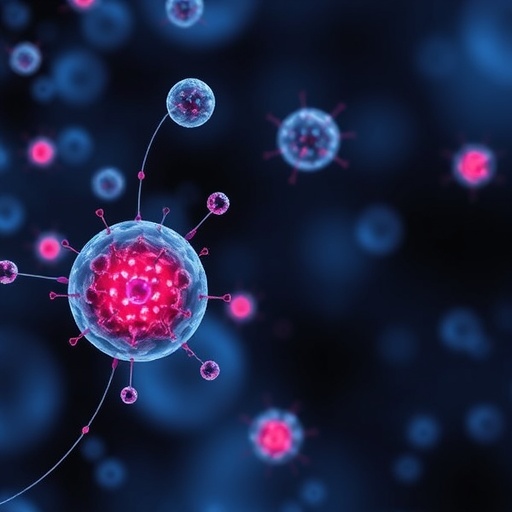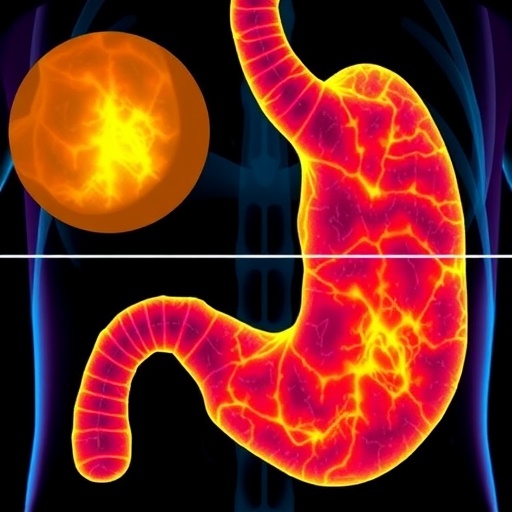Finding offers potential novel approach to cancer treatment and prevention
BOSTON – Your mother was right; broccoli is good for you. Long associated with decreased risk of cancer, broccoli and other cruciferous vegetables – the family of plants that also includes cauliflower, cabbage, collard greens, Brussels sprouts and kale – contain a molecule that inactivates a gene known to play a role in a variety of common human cancers. In a new paper published today in Science, researchers, led by Pier Paolo Pandolfi, MD, PhD, Director of the Cancer Center and Cancer Research Institute at Beth Israel Deaconess Medical Center, demonstrate that targeting the gene, known as WWP1, with the ingredient found in broccoli suppressed tumor growth in cancer-prone lab animals.
“We found a new important player that drives a pathway critical to the development of cancer, an enzyme that can be inhibited with a natural compound found in broccoli and other cruciferous vegetables,” said Pandolfi. “This pathway emerges not only as a regulator for tumor growth control, but also as an Achilles’ heel we can target with therapeutic options.”
A well-known and potent tumor suppressive gene, PTEN is one of the most frequently mutated, deleted, down-regulated or silenced tumor suppressor genes in human cancers. Certain inherited PTEN mutations can cause syndromes characterized by cancer susceptibility and developmental defects. But because complete loss of the gene triggers an irreversible and potent failsafe mechanism that halts proliferation of cancer cells, both copies of the gene (humans have two copies of each gene; one from each parent) are rarely affected. Instead, tumor cells exhibit lower levels of PTEN, raising the question whether restoring PTEN activity to normal levels in the cancer setting can unleash the gene’s tumor suppressive activity.
To find out, Pandolfi and colleagues identified the molecules and compounds regulating PTEN function and activation. Carrying out a series of experiments in cancer prone mice and human cells, the team revealed that a gene called WWP1 – which is also known to play a role in the development of cancer – produces an enzyme that inhibits PTEN’s tumor suppressive activity. How to disable this PTEN kryptonite? By analyzing the enzyme’s physical shape, the research team’s chemists recognized that a small molecule – formally named indole-3-carbinol (I3C), an ingredient in broccoli and its relatives – could be the key to quelling the cancer causing effects of WWP1.
When Pandolfi and colleagues tested this idea by administering I3C to cancer prone lab animals, the scientists found that the naturally occurring ingredient in broccoli inactivated WWP1, releasing the brakes on the PTEN’s tumor suppressive power.
But don’t head to the farmer’s market just yet; first author Yu-Ru Lee, PhD, a member of the Pandolfi lab, notes you’d have to eat nearly 6 pounds of Brussels sprouts a day – and uncooked ones at that – to reap their potential anti-cancer benefit. That’s why the Pandolfi team is seeking other ways to leverage this new knowledge. The team plans to further study the function of WWP1 with the ultimate goal of developing more potent WWP1 inhibitors.
“Either genetic or pharmacological inactivation of WWP1 with either CRISPR technology or I3C could restore PTEN function and further unleash its tumor suppressive activity,” said Pandolfi. “These findings pave the way toward a long-sought tumor suppressor reactivation approach to cancer treatment.”
###
In addition to Pandolfi and Lee, authors include, Ming Chen, Jonathan D. Lee, Jinfang Zhang, Tomoki Ishikawa, Jesse M. Katon, Yang Zhang, Yulia V. Shulga, Assaf C. Bester, Jacqueline Fung, Emmanuele Monteleone, Lixin Wan, John G Clohessy, and Wenyi Wei, all of BIDMC; Shu-Yu Lin, Shang-Yin Chiang and Ruey-Hwa Chen of Institute of Biological Chemistry; Tian-Min Fu and Chen Shen of Harvard Medical School; Chih-Hung Hsu, Hao Chen and Hao Wu of Boston Children’s Hospital; Antonella Papa of Monash University; Julie Teruya-Feldstein of Icahn School of Medicine at Mount Sinai; Suresh Jain of Intonation Research Laboratories; and Lydia Matesic of University of South Carolina.
This work was supported by the National Institutes of Health (R01CA82328 and R35 CA197529), granted to Pandolfi. Lee was supported in part by the Postdoctoral Research Abroad Program Fellowship, Taiwan National Science Council (NSC), and DOD Prostate Cancer Research Program (PCRP) Postdoctoral Training Award (W81XWH-16-1-0249).
Disclosures: Pandolfi, Wei and Suresh Jain are cofounders of Rekindle Pharmaceuticals. The company is developing novel therapies for cancer. All other authors declare no competing interests.
About Beth Israel Deaconess Medical Center
Beth Israel Deaconess Medical Center is a patient care, teaching and research affiliate of Harvard Medical School and consistently ranks as a national leader among independent hospitals in National Institutes of Health funding.
BIDMC is in the community with Beth Israel Deaconess Hospital-Milton, Beth Israel Deaconess Hospital-Needham, Beth Israel Deaconess Hospital-Plymouth, Anna Jaques Hospital, Cambridge Health Alliance, Lawrence General Hospital, MetroWest Medical Center, Signature Healthcare, Beth Israel Deaconess HealthCare, Community Care Alliance and Atrius Health. BIDMC is also clinically affiliated with the Joslin Diabetes Center and Hebrew Rehabilitation Center and is a research partner of Dana-Farber/Harvard Cancer Center and the Jackson Laboratory. BIDMC is the official hospital of the Boston Red Sox. For more information, visit http://www.
Beth Israel Deaconess Medical Center is part of Beth Israel Lahey Health, a new health care system that brings together academic medical centers and teaching hospitals, community and specialty hospitals, more than 4,000 physicians and 35,000 employees in a shared mission to expand access to great care and advance the science and practice of medicine through groundbreaking research and education.
Media Contact
Teresa Herbert
[email protected]




